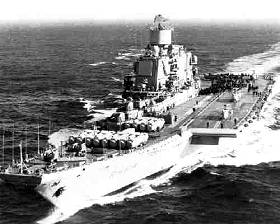We are developing the social individualist meta-context for the future. From the very serious to the extremely frivolous... lets see what is on the mind of the Samizdata people.
Samizdata, derived from Samizdat /n. - a system of clandestine publication of banned literature in the USSR [Russ.,= self-publishing house]
|
On March 19 1995, the Aum Shinrikyo cult released the nerve gas Sarin on five trains of the Tokyo underground. Until 2001, I rated this the most frightening news story of the previous ten years. Why? Because until then the most severe weapons that had been used by terrorists had been conventional explosives. The expression “Weapon of Mass Destruction” is overused, but as the word is usually definted, this fit the bill. As it happened, due to a combination of inexperience in deployment and concern for the safety of the people actually deploying the weapons – the concentration of sarin in the containers was apparently substantially lower than Aum Shinrikyo had considered using – the Tokyo attack only killed 12 people, although a great many more were injured or otherwise affected by the attack.
But it was extremely close. Had a few fairly minor details been different, thousands would have died. As it happened, Aum Shinrikyo had one chance only to cause carnage of this kind. They were the kind of organisation that it was relatively easy for the Japanese authorities to round up and eliminate, and the Japanese authorities did indeed do this. But what they demonstrated is that a few skilled chemists with the sorts of resources that can be moderately easily bought on the open market in a developed country can produce extremely deadly chemical weapons.
It is now 2004, and such weapons have not been used again by terrorists. (In fact, I don’t think they have been used in warfare since then either. To be truthful, they are not terribly useful in achieving military objectives unless your military objectives include killing large numbers of civilians. Saddam Hussein in the 1980s seems to be the last person who was into using them in a big way. While on that, I hope Mr Hussein is enjoying his cell in Qatar or wherever it is). Since then, we have had far too many terrorist attacks using conventional explosives, and one attack in which terrorists attempted to see if the sorts of fantasies that exist in Tom Clancy novels and James Bond movies will work in real life. (The answer was clearly yes, once. I can’t imagine that September 11 type attack will work again, however). What we have learned since then is that there are terrorists out there who wish to kill westerners in large numbers, and who have operatives who are willing (or even eager) to die while delivering the weapons. Given that, an attack such as the one in Tokyo seems a fairly obvious way to achieve such objectives. So why hasn’t it happened? I find it impossible to believe that Al Qaeda would not attempt such an attack if it could. The only explanation must be that they do not have such weapons?
Why not? Demonstrations that something is possible are usually followed by somebody else trying it. So why not here?
→ Continue reading: The puzzle of why terrorists do not have weapons of mass destruction
An interesting question for those concerned about creating a more free society is how such a society, be it a model of constitutional, limited, minimal government, or even an anarchist one, would actually defend itself from attack. What sort of practical ways would such societies employ, and would such societies require armies, navies, air forces and the like?
It seems pretty fair to me to assume that outside some sort of pacifist utopia, any such model requires defence and people with the skills and willpower to serve as soldiers, pilots and the like. That is why in the absence of the draft, which libertarians rightly abhor, we need people who can volunteer to serve in the armed forces, giving up the comforts of home. That is not sentimental military-speak, but hard reality.
Hard reality is something of a stranger to the author of this diatribe, full of twisted logic, presumptiousness and lies against the late American soldier and former NFL star, Pat Tillman.
I will not bother to fisk the piece. The illogicality of it is so glaring, its vile intent so obvious, that a line by line response would merely insult the intelligence of this blog’s readership. Suffice to say that a man gave up the promise of a fat paycheck and the comforts of a loving family to go and join the army, knowing that in so doing he might be called upon to fight in situations those moral perfectionists in our academic world would find abhorrent.
Whether one agrees with the war against Saddam and the Taliban or not, on a broader point, it seems obvious to me that we will need people willing, like Pat Tillman, to defend us. This is a point that about which a “chickenhawk” like me who is too old to serve in the forces any more is only too painfully aware.
Remember the name of the woman who wrote this shabby article. As the years go by no doubt she will continue to enjoy the benefits of a world made rich by a model of free enterprise she hates, and defended by “macho” men she despises. But I will not forget. This sorry excuse for a human being has not just traduced the memory of a very brave and good man; she has done so against all those who believed they were fighting to defend the freedoms we enjoy.
(Please post comments on the Daily Collegiate website I linked to. They deserve to hear what you think).
I have only just noticed this. But I agree with it, and I think the point is good enough to last way longer than a fortnight. It is from our own Natalie Solent on what to do about hostage taking:
Iraqi gunmen of the Mujahideen Brigades, a previously unknown group, have taken three Japanese citizens captive and say that Japan must pull out its troops or the prisoners will be burned alive.
Well, it worked in Spain. It worked in Somalia. The question is, do we keep it working?
I say, no. Kill the Muhajideen brigades. God willing the hostages might be saved, but if they are killed too, better a bullet than being burned alive and better a world where they die thus than one where the tactic of threatening hostages with death by torture works. As I said in January when Israel more-than-foolishly released many terrorists in exchange for an Israeli hostage, “Yes, of course I’d feel and speak very differently if it was my relative held hostage. Do you think I’m made of stone? But what is that to the purpose?” Think not only of the hostage we see now but of the next, and the next, and the next – because unless war is waged and won on this tactic, that is what there will be.
Whenever I line up next to, or myself say, things like this, I recall Saki’s phrase about the reckless courage of the non-combatant. As Natalie asks, what if a relative of hers were a hostage? What if she was? What if I was?
Nevertheless, I truly believe that she is right, and there is no future in giving in to these people, and not too abysmal a hope of a present for any hostages if the captors and their fortress are stormed rather than negotiated with.
There are times when the newsies reach depths which even I find difficult to fathom. There has been an ongoing debate with the DOD by the lowest of the breed about access to Dover Air Force Base where our war dead make their first stop on home soil.
The DOD says it is being sensitive to the needs of the families; that most do not want the return of their loved ones turned into a ratings carnival for the Evening News.
Personally, if I were a family member and a loved one of mine were being returned, I would expect quiet and dignity. If the DOD ever changes the policy in favour of the paparazzi, family members should consider applying their weapon of choice against the nearest, most expensive cameras.
Kicking a cameraman in the balls could be equally educational to the receiver, even if she doesn’t have them.
The enemy advances, we retreat; the enemy camps, we harass; the enemy tires, we attack; the enemy retreats, we pursue.
– Mao Tse Tung
The recent offer of truces by both Al Quaeda and Muqtada al Sadr’s followers in Iraq suggests an incompetence for guerrilla warfare, or that they are losing.
There are two dangers in the weeks ahead. The first is that since the 1960s, a different sort of guerrilla warfare has emerged, which consists of sacrificing cannon-fodder until your opponent can no longer morally take it.
The first historical case of this that I can find comes from the First World War, on the second day of the Battle of Loos. It was an accident. Ten thousand British troops were lined up in ten ranks and marched slowly across muddy open terrain with range markers placed by the Germans. The German machine gunners simply mowed down rank after rank of the British, without taking any casualties themselves. The British came up to the barbed wire that was supposed to have been cut by the artillery bombardment, only it had not been. None of the British troops was equipped with wire cutters (this bit has not changed). So groups of British soldiers ran up and down the barbed wire looking for a way through. The result was virtually 100 per cent casualties on the British side.
Now it is not true that this battle left the Germans unscathed. About a dozen German machine gunners were so traumatised by the massacre that they suffered nervous breakdowns and needed to be hospitalized (the British would have shot them for cowardice).
Since the Vietnam War, it has become a deliberate tactic of the weaker combattant to make a point of losing hundreds or thousands of casualties in the belief that the West does not have the stomach for slaughtering poorly armed enemies. To return to the Mao quote, now is the time to press even more firmly with military force: “enemy tires, we attack”. Failure to do so merely confuses by-standers who consider compassion to be effeminate weakness, and encourages the enemy.
The second threat is the ‘compromise’ with the UN. Letting the UN organise the hand-over of power to an Iraqi government (which will surely be different from the one the US wants) is rather like inviting the USSR to decide who governs Germany and Japan in 1945. Except that the USSR was an ally.
Paul Staines points out a splendid example of the French state doing its bit to support the world’s largest tyranny
As Taiwan’s democrats get bullets before ballots, France demonstrates its exceptionalism once again. This week the French navy began joint exercises with the Chinese navy. No, really.
Not content with just lobbying other EU countries to lift the arms embargo on China imposed in the wake of the Tiannamen Square massacre in 1989 (who says the French are always against free trade?), they are training with the Chinese navy. The official Chinese news agency, Xinhua, said they would be China’s biggest ever joint military exercises with a foreign power. (Note to Beijing, it took Churchill a single day to sink almost the entire French navy, but maybe you have not got many seafaring friends to learn from.)
Taiwan obviously is anxious about the situation – which they describe as a threatening show of force. The French not content with cruising the seas with Taiwan’s mortal enemy recently condemned President Chen Shui-bian’s plan to hold a referendum on missile defense as part of this coming Saturday’s election, prompting Taipei to suspend top-level ties with Paris.
I suppose with reduced opportunities for arms sales to Iraq the prospect of equipping the Chinese military appeals.
Paul Staines
There is a reason why the military is one of the few areas in which the State operates successfully. It is Darwinian. Bad soldiers die at a faster rate than good soldiers; bad generals lose battles and are replaced; nations with bad armies cease to exist.
So it is with defense programs in war time. No matter how technically sweet a weapon system may be, it must fulfill an actual current battlefield need. It must be able to survive in the battlefield that actually exists and perform the actual missions required in war as it is, rather than as it was imagined.
So it is with heavy heart we say goodbye to a truly magnificent and now still-born aircraft: the Comanche. The US Army announced it will be cancelled. The money will instead be used to buy more Longbows and Blackhawks and to upgrade survivability across the fleet and especially in the National Guard units.
The SAM’s of Iraq spoke… and the US Army listened.
About a year ago I predicted the US was in the first stages of disentangling itself from global tarbabies. Invading Iraq was one of the items I expected as there was no real path out of the Middle East so long as Saddam was there. Northern and Southern Watch would have continued for decades. This is not to say America will not be stuck there for quite a few years to come, only that there is a plausible exit strategy where there once was none.
The BRAC (Base Realignment and Closure) process is due to culminate in a report in mid-March and will include what may well be the greatest re-organization of American overseas basing since the end of WWII. I expect to see the buzz word ‘capabilities based defense’ used as an explanation for greatly decreased numbers of Americans in overseas bases.
The third part is South Korea, and I give you these two items from Jane’s to take as thou wilt:
Seoul’s AEW&C buy will reduce reliance on US.
The relaunch of the E-X airborne early-warning and control (AEW&C) programme by the Republic of Korea (RoK) Ministry of National Defence (MND) on 4 February is intended to reduce the country’s reliance on US Air Force E-3 Sentry Airborne Warning And Control System (AWACS) aircraft (JDW 11 February).
[Jane’s Defence Weekly – first posted to http://jdw.janes.com – 13 February 2004]
South Korea haggles over procurement programme. The Republic of Korea Ministry of National Defence (MND) established its Korea Multirole Helicopter (KMH) Programme Management Office (PMO) last month to lead the country’s largest-ever defence procurement programme, with a value of some $12.5 billion.
[Jane’s Defence Weekly – first posted to http://jdw.janes.com – 13 February 2004]
We will see agreements for unrestricted bases containing pre-positioned supplies in in places convenient to expected trouble spots. There will only be enough local American staff to handle peace-time security, inventory and infrastructure. Perhaps there will be some intelligence, training and Special Forces as well, but the ‘footprint’ will be small. As much as possible will be handled by civilians, on base where absolutely required and otherwise ‘outsourced’ to a back-office in the US.
Naval basing will be an exception. A primarily maritime power still needs home ports for the Fleet that are within reasonable sailing distances of trouble spots.
We are entering an era in which our military will be kept at home and deployed only when and where required. It will take most of this decade to get there.
Wired reports that Russia has successfully tested a hypersonic anti-Star Wars weapon capable of penetrating any prospective missile shield, a senior general said Thursday. The prototype weapon proved it could maneuver so quickly as to make “any missile defense useless,” Col.-Gen. Yuri Baluyevsky, the first deputy chief of the General Staff of the Russian armed forces, told a news conference.
This exchange of statements has an air of nostalgia about it:
Putin said that the development of new weapons was not directed against the United States, and Baluyevsky reaffirmed the statement, saying that the experiment shouldn’t be seen as Russia’s response to U.S. missile defense plans. “The experiment conducted by us must not be interpreted as a warning to the Americans not to build their missile defense because we designed this thing.”
In Washington, Gen. Richard Myers, chairman of the Joint Chiefs of Staff, was asked by reporters about the Putin statement. “If you’re in that business — intercontinental ballistic missiles and warheads — you want them to be survivable, and maneuverability is one way to increase their survivability against any potential defenses.”
I suppose the signs of new era are the following bits:
Putin said that Russia has no intention of immediately deploying new weapons based on the experimental vehicle. “We have demonstrated our capability, but we have no intention of building this craft tomorrow.”
Baluyevsky said that Russia had informed the United States about its intention to conduct the experiment and added that U.S. officials issued no objections.
We shall see.
This is an thoughtful posting:
The weekend was spent in Manchester, via Oxford. On Sunday morning a friend and I visited the Imperial War Museum North, which forms part of the dramatic redevelopment of the quaysides around the ship canal on the Salford/Trafford border.
I was brought up on school trips to the Imperial War Museum in Kennington. The huge naval guns at the entrance, the trench experience, the endless tanks, artillery pieces and bombers’ cockpits you can climb over, the uniforms, guns and bayonettes in cases. Regardless of your attitude towards war, you can’t deny it is a fascinating collection.
So we expected something similar in Manchester, but were surprised. There are very few physical exhibits: one T34 tank, a field gun, a fire engine, and for reasons I still don’t understand, a Trabant car. The cases are sparsely filled. The emphasis is not on weapons or uniforms or battles, but on the effect of war on people – refugees, children, prisoners, asylum-seekers, and peace protestors. So there were more letters and diaries than rifles and grenades. There was even a case filled with cultural items which reflect Britons’ obsession with WWII: Warlord comics, action man, and Dad’s Army.
There are frequent films projected on the vast walls – we saw one about children in war, and one about the ’causes of war’ (it’s all about oil and money).
This is not a place for a military historian or one who wants to see the development of the machine gun, but perhaps that’s not what people want anymore. Does the new type of musuem reflect changing social attitudes, or is it trying to mould them?
At least the architecture of the building, designed by Daniel Libeskind, is stunning, and you can buy Airfix models in the giftshop (very tempting!).
“Stunning” means, from the outside, looking like this:
Normally, I do not dislike buildings of this sort. For modern art something along these (curvey) lines is very appropriate. But put it like this, if the people who fought and died in the wars being propagandised about inside this edifice were asked what they thought of it, what do you think they would say? Or is it that I now associate such buildings with harmless trivialities, that therefore it really does not matter what they look like, and that therefore the architect might as well have some fun – but this is a museum about war?
By the way, to add some other design-related facts, the genius who did the recent redesign of Samizdata.net, and who designed this and this, and also, not surprisingly, this, also did this.
India has closed the deal for the purchase of the ‘Admiral Gorschkov’, a Cold War era Russian aircraft carrier. It is expected this ship will come into service with the Indian Navy around 2008, just in time for the retirement of the INS Viraat, their current aircraft carrier.
It is quite interesting that there is a continuing armaments relationship between the Russians and India, despite the seismic geopolitical changes of the last decade. An untutored alien landing for the first time on Earth would make no sense of it. The roles of the US and the USSR in that region should be reversed, Russia should be partnered with the alternating military dictatorship and semi-democratic kleptocracies of Pakistan and the US with India, the oldest liberal democratic state in Asia.
Relations between nations have layers within layers and oft-times deep and conflicting historical roots, I am aware of some of the public history of the region, but cannot help wondering if there is a bit more to it, an unspoken geopolitical undertext.
India has centuries of liberal European traditions behind it. It is also not likely to change very much even under severe pressure. Generations would come and go before the paperwork for change was properly submitted, checked, authorized and filed. In a Cold War world the risk of India actually going Red was rather slim and thus of less worry than perennially unstable Pakistan.
Pakistan borders China and is within spitting distance of Russia across a ultra thin panhandle of Afghanistan. The region is wild and uncontrolled and right in the hotspot is the contested Kashmir Province. Given the location and the consistant interest in access to the oil and southern oceans shown from Tsarist through Soviet days, Northern Pakistan was absolutely ripe for fun and games with the KGB. It seems obvious checkmating this move was of far more Realpolitik value than telling the Indians how much we admired their history.
With the end of the Evil Empire, much of Geopolitics changed, but the full extent of the re-alignment of interests in this part of the world did not really click into place until September 11th, 2001. Islamic fundamentalists were already a clear and present danger to the Russians. Nutcases don’t even have to board an airliner to get to Moscow. They can drive there. After 9/11 they were also top priority to the US.
Over the last century or so, the Russians have ticked off a lot of people on their borders and they know it. They’ve done a far better job at this than the US… so it is somewhat in their interest for the US to take the brunt of whatever direct ire is caused by sorting out the problems. Otherwise they would have to deal with it, and given their level of success in Afghanistan and Chechnya, I would not have much hope for solutions from that direction.
From the Russian viewpoint, it is ideal if the US stabilizes Pakistan and acts as the lightning rod for fundamentalist ire; meanwhile they help arm India so that in the worst case, a fundamentalist takeover of Pakistan, India can keep Pakistan occupied and looking away from Russian territory.
The Russians see the regional problems up front and personal; they are damned pretty much whatever they do and aren’t very good at building stable liberal democracies. They haven’t even worked the bugs out of their own yet. The US is somewhat less at risk from the downsides of action in the region since it is far, far away and bordered by oceans and democracies. Not that such is a total protection. It just means the crazies have to expend more energy and more resources to carry out their attacks. To put it bluntly, the US stands to lose a smaller number of cities to the fundies than would Russia.
So there is method to this madness. You just have to sit a moment in everyone’s chair and ask ‘what’s in it for me?’
The Threatening Storm: The Case for Invading Iraq
Kenneth M. Pollack
Random House, 2002
The author, a (presumably ex-) CIA operative, has written this book, published in the Autumn of 2002, as an advocate of “regime change” in Iraq, listing the various alternative options, five in all: Containment, Deterrence, Covert Action, The Afghan Approach” and (the preferred one) Invasion (p. xxix and Part III, pp. 211-386).
Iraq’s History and Relations with the US to Gulf War I
Part I (pp. 1-108) Iraq and the United States, following a 30 page Introduction, gives a concise summary of Iraq’s history and relations with US, with greater concentration after the fall of the Shah turned Iran from a Western bulwark to Islamic menace. From someone regarded with repugnance, Saddam became the “man we can do business with”, which meant tolerating some ghastly atrocities in the chemical warfare line against rebel Kurds and Iran, which Saddam had rashly taken on after its armed forces had been purged by the mullahs and sabotaged by departing US and dissident technicians. If the US rescued Iraq by supplying weapons, others – China, Russia (still the USSR), France, Germany and Britain – followed suit, many selling the ingredients for the nuclear, chemical and biological programs that have subsequently given so much trouble (p. 19). Officially Saddam could claim a victory and emerged from the 1980-88 war with a large well-armed army, but with 200,000 dead, terribly in debt and his economy badly degraded. His decision to attack and occupy Kuwait for its wealth, in gold, goods and oil, was fortified by his mistaken belief that his army could defeat an American riposte, and not unassisted by misguided pacific overtures and reports by the US ambassador, Susan Glaspie – and what has happened to her, I wonder? → Continue reading: The case for invading Iraq put (before it actually happened)
|
Who Are We? The Samizdata people are a bunch of sinister and heavily armed globalist illuminati who seek to infect the entire world with the values of personal liberty and several property. Amongst our many crimes is a sense of humour and the intermittent use of British spelling.
We are also a varied group made up of social individualists, classical liberals, whigs, libertarians, extropians, futurists, ‘Porcupines’, Karl Popper fetishists, recovering neo-conservatives, crazed Ayn Rand worshipers, over-caffeinated Virginia Postrel devotees, witty Frédéric Bastiat wannabes, cypherpunks, minarchists, kritarchists and wild-eyed anarcho-capitalists from Britain, North America, Australia and Europe.
|





